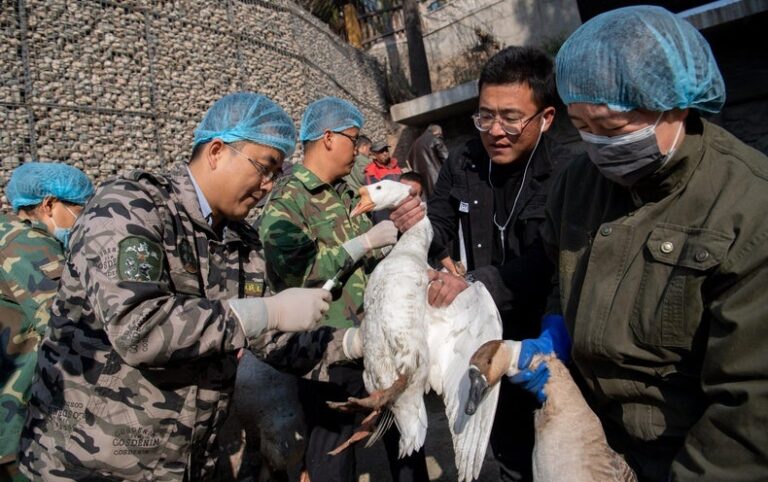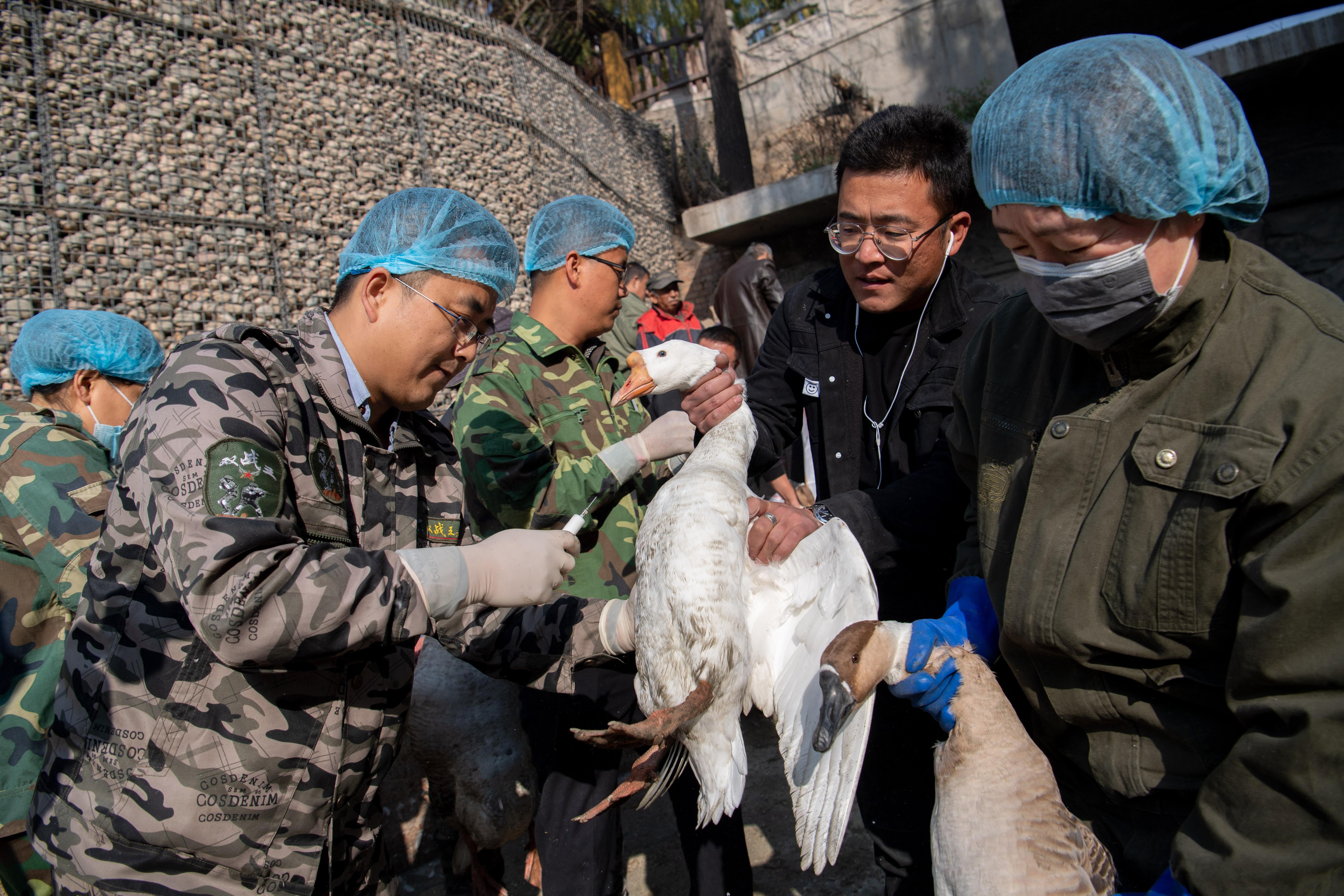
[ad_1]

The last two years have witnessed an unprecedented global expansion of avian influenza. Moving along migratory bird flyways into Europe and the Americas, a new strain of H5N1 influenza has established itself in wild birds and domestic poultry, leading to a record 58.6 million birds culled in the U.S. and new outbreaks across Latin America and the Caribbean. This strain’s spread in birds, along with infections of mammals and sporadic human cases—one fatal—raises pandemic influenza concerns.
Last October the virus was likely transmitting between farmed mink in Spain and may have spread among sea lions during a mass mortality event in Peru earlier this year. Influenza is highly mutable and prone to dramatic genetic shifts, challenging any prediction of which viral subtype could emerge as a future pandemic. But each such event is another warning of viral churn, the portrait of a mutating pathogen that could yield a virus capable of infecting and transmitting among humans.
This is a numbers game—a game we are losing.
We must seize the opportunity to invest in prevention and fill gaps in global detection and response to avert an influenza pandemic. But what do we have to do better?
Pandemics are a byproduct of how humans live on this planet: intimately connected across aggressively altered landscapes as we seek to house and feed over eight billion people. Influenza is no exception. Soaring demand for meat and eggs is shifting animal production and land use patterns, driving animals and humans into ever greater contact and escalating pandemic risk. Yet dialing back pandemic influenza risk is within our reach.
Immediately, we must redouble upstream prevention, mitigating risk where the virus circulates in wild and domestic animals. On farms, restricting entry, limiting vehicle and equipment movement and implementing strict worker disinfection protocols will boost biosecurity. Checklists can be useful to systematically fill biosecurity gaps. Limiting domestic animal contact with wild birds—particularly at shared water sources—is essential. In England, a mandatory order for all poultry holders to house their flocks indoors is reducing domestic poultry exposure. Early warning surveillance and bird migration patterns can help target housing orders to times of peak risk.
Market-based live poultry sales, common globally, also carry risk. Livelihoods depend on these markets. But we can make them safer. Separating highest-risk activities, such as on-site slaughter, defeathering and processing away from points of sale may help reduce viral exposure. These protocols should be augmented with regular cleaning and disinfection, market rest days, avoidance of species mixing, and bans on overnight poultry holding—all proven to reduce circulating virus.
Strategically vaccinating poultry, while carrying trade-restriction implications for poultry-exporting nations, can also substantially reduce circulating virus when other containment measures fail. When Guangdong province in China began mass poultry vaccination with an H7 vaccine in 2017, zoonotic influenza A/H7N9 human cases dropped 98 percent within a year.
Together, these upstream measures minimize human exposure and interrupt viral exchange between wild birds, domestic poultry and other animals. To successfully implement these measures, farmers and businesses along the chain of production from farm to fork can’t exclusively shoulder the costs; instead, these interventions should be viewed as investments in protecting public health. The newly launched Pandemic Fund can play an important role in building out the animal health capacities required for safe, secure, sustainable animal production and disease prevention.
The investment case is clear: spend modestly on prevention now, or pay catastrophic health and social disruption costs later. The price tag for such a global prevention architecture? $11.5 billion annually. By contrast, in 2020 the global economy contracted 3.1 percent due to COVID—more than $2.7 trillion—with continued economic scarring projected through 2023. Our best, and most cost-effective, approach to averting the next pandemic is to reduce the viral exposure and spillover that spark outbreaks.
However, we should not rely upon prevention alone to counter pandemic influenza. We must also fine-tune our surveillance structures to pick up signals from influenza viruses displaying worrisome mutations in both traditional and unexpected locations where animals and humans mix, risking spillover. These structures should see around corners, tracking the virus in new animal hosts to inform risk assessments. And we must dramatically extend their reach.
Frontline health care workers globally should stay alert to unusual patterns of respiratory illness, prepared to quickly identify and arrest the earliest human-to-human clusters should they emerge. COVID broadened existing capabilities to identify human acute respiratory infections. We should leverage them. Influenza is not the only viral threat of this pandemic era, and as we suggested in 2017, these syndromic surveillance platforms should also detect a broad array of both known and as-yet-unknown respiratory viruses.
Critically, we should expand stockpiles of prepandemic influenza vaccine, reserves meant to buy time until a well-matched shot can be produced. We need to produce, preauthorize and predeploy these vaccines equitably worldwide. Prepositioned vaccines, antivirals, personal protective equipment and rapid tests could save precious weeks and months in an escalating epidemic, breaking transmission chains, averting a pandemic and saving lives.
Finally, hoping that history does not repeat itself should not be our pandemic influenza contingency plan. Engaging community leaders in scenario planning should start now. And we must learn from COVID and engineer messaging campaigns that unite the global community around a shared vision— preventing the next pandemic.
Reassuringly, there is progress: Heightened surveillance alerts have been issued. Surge capacity planning tools are available. Prepandemic influenza vaccine virus, based on the new clade 2.3.4.4b strain, has been proposed. And paradigm-shifting, palm-sized genetic sequencing platforms now bring the lab into the field; these devices turn samples into full viral genome sequences in less than a day, making them available immediately on genetic repositories. Air samplers placed in live animal markets and other high-risk, high-contact locations paired with these field diagnostics bring us closer to near-real-time influenza monitoring.
Migratory birds will soon move north to summer breeding grounds, carrying with them the prospect of a fresh set of viral incursions. Yes, influenza is churning, but we can expand these strategies to keep us ahead of the next outbreak. The off-ramp from the pandemic era is well-marked. The choice before us is whether we take it.
The views expressed here are those of the authors and do not necessarily reflect those of USAID, the U.S. government or the Food and Agriculture Organization of the United Nations.
This is an opinion and analysis article, and the views expressed by the author or authors are not necessarily those of Scientific American.
[ad_2]